Paper Bags vs. Gift Boxes:When to Use Each
This guide compares paper bags and gift boxes, analyzing costs, sustainability, and use cases to help you choose the best packaging for any occasion.
Summary
Paper Bags vs. Gift Boxes: When to Use Each is a comparative analysis of two popular gift packaging options, examining their historical development, advantages, and disadvantages to help consumers make informed choices based on situational needs. The evolution of packaging materials from ancient traditions to modern innovations illustrates the significance of both paper bags and gift boxes in contemporary gifting practices. Each option presents unique benefits, with paper bags being celebrated for their environmental sustainability and versatility, while gift boxes are favored for their aesthetic appeal and ability to enhance the emotional experience of gift-giving.
The choice between paper bags and gift boxes is influenced by various factors, including the nature of the occasion, consumer preferences, and current trends in sustainability. Paper bags are often used for casual or everyday gifting scenarios, aligning with a growing consumer preference for eco-friendly materials. In contrast, gift boxes are preferred for significant events where presentation is paramount, as they offer a more luxurious and customizable option that enhances the perceived value of the gift.
Notable controversies surrounding the use of these packaging methods revolve around their environmental impact. While paper bags are often marketed as more sustainable than plastic, the production processes involved in creating both paper and gift boxes can lead to significant ecological footprints, raising questions about their true environmental benefits. Additionally, the increasing competition from digital gifting alternatives poses challenges to traditional packaging methods, compelling manufacturers to adapt to evolving consumer preferences.
In summary, the decision to use paper bags or gift boxes ultimately hinges on contextual factors such as the occasion, recipient, and environmental considerations, with each option offering distinct advantages and drawbacks. As consumers become more environmentally conscious, understanding the implications of these packaging choices is essential for fostering sustainable gifting practices.
Table of Contents
Historical Context
The act of gift-giving is a practice that dates back to early human societies, predating recorded history and consumerism trends. As societies evolved, the methods and materials used for presenting gifts also transformed. In ancient times, gifts were often given without elaborate packaging, focusing instead on the item itself and the sentiment behind it.
Development of Packaging Materials
The introduction of paper as a packaging material emerged significantly later. The Silk Road facilitated trade, allowing for the spread of papermaking techniques from East to West. By the 8th century, advancements in papermaking were made in Italy, which improved the quality of paper used for various purposes, including packaging. The first machine to mass-produce paper bags was invented in 1852 by Francis Wolle, marking a pivotal moment in the evolution of packaging materials.
Rise of Gift Boxes
As the market for consumer goods expanded, so did the need for more sophisticated gift packaging. Gift boxes emerged as a popular choice, offering not only protection for the contents but also a means to express thoughtfulness and aesthetic appeal. The United States became a leader in the gift box industry, driven by a growing demand for premium and customizable packaging options. The integration of sustainable practices into packaging also reflects a broader historical trend towards environmental awareness in consumer culture.
Transition to Sustainable Practices
In contemporary times, there is a significant shift towards sustainable materials in both gift packaging and paper bags. With increasing consumer preference for eco-friendly options, materials such as recycled paper and biodegradable fabrics are gaining traction in the packaging industry. This reflects a historical evolution in consumer values, where sustainability has become a key consideration in the selection of packaging methods for gifts and everyday items alike.
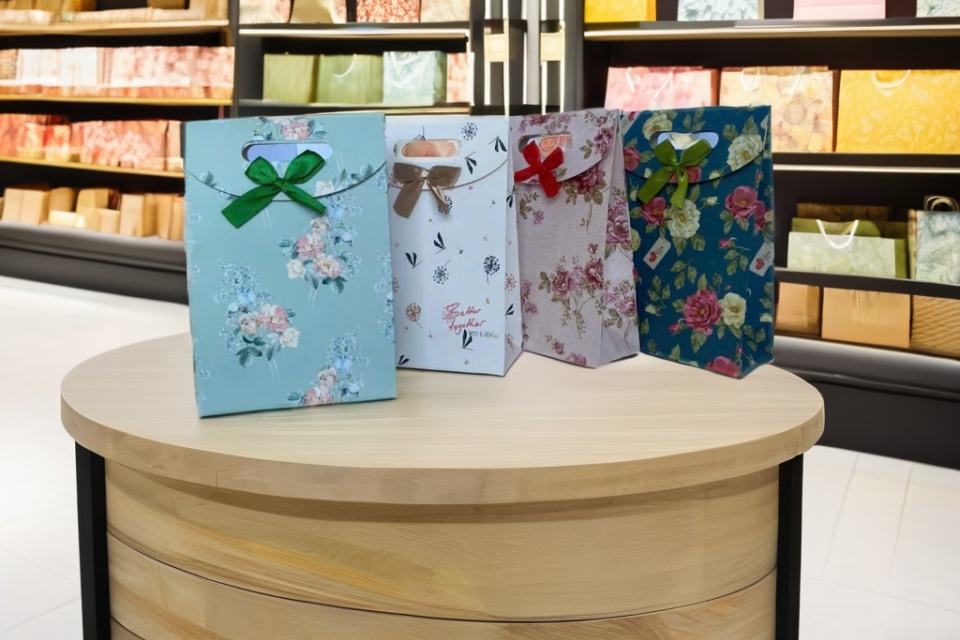
Advantages of Paper Bags
Paper bags have become a popular choice for packaging due to their numerous advantages over plastic and other materials. They offer a variety of benefits that align with environmental sustainability and consumer preferences.
Environmental Benefits
One of the most significant advantages of paper bags is their environmental friendliness. They are produced from renewable raw materials, primarily cellulose fibers derived from sustainably managed forests. This characteristic makes them biodegradable, allowing them to decompose within approximately 2-4 months when disposed of properly. Additionally, paper bags are recyclable, contributing to a circular economy where materials can be reused and repurposed, reducing overall waste.
The production of paper bags also aids in carbon sequestration. Trees absorb carbon dioxide (CO2) as they grow, and using paper products continues to store carbon even after their lifecycle. By promoting the use of paper bags, businesses can help mitigate climate change while enhancing their eco-friendly image.
Versatility and Customization
Paper bags are incredibly versatile and come in various shapes and sizes, making them suitable for different packaging needs across the food industry and beyond. They can be customized easily, allowing brands to enhance their visual identity and attract eco-conscious consumers. This adaptability is particularly advantageous for businesses looking to differentiate themselves in a competitive market.
Regulatory Compliance and Consumer Preference
With increasing regulations against plastic bags in many regions, businesses are finding that transitioning to paper bags not only complies with legal requirements but also resonates with consumers’ growing environmental concerns. Retailers can enhance their brand image and build stronger customer relationships by using sustainable packaging options like paper bags, which appeal to modern consumers’ values.
Economic Advantages
Beyond their environmental impact, paper bags can also offer economic benefits. They are relatively inexpensive to purchase in bulk, providing cost-effective packaging solutions for businesses. Moreover, the shift towards sustainable practices can lead to long-term cost savings and operational resilience, as businesses adapt to changing consumer preferences and regulatory landscapes.
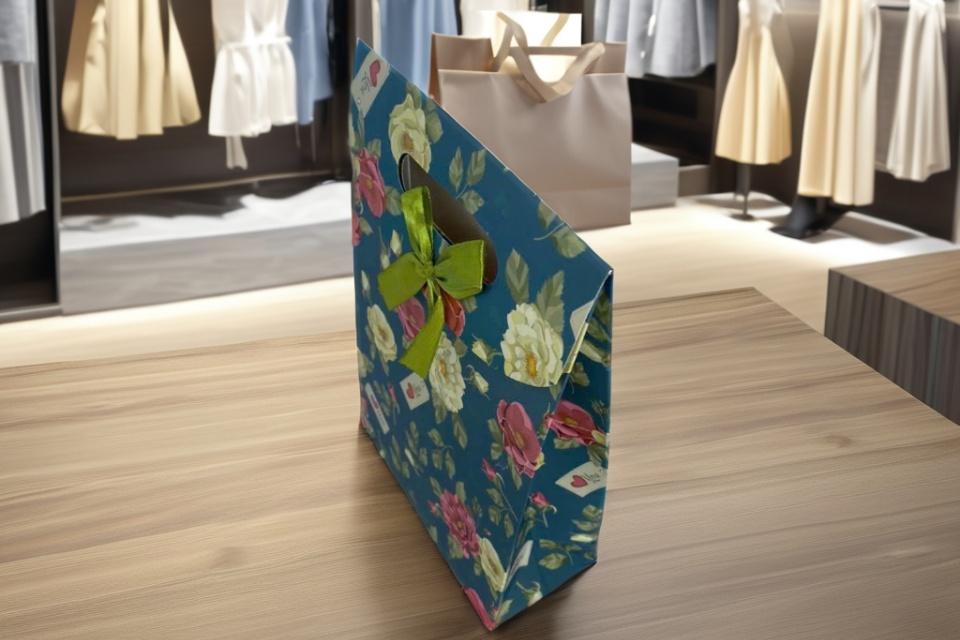
Advantages of Gift Boxes
Gift boxes provide numerous advantages that make them a preferred choice for gifting across various occasions. Their versatility, aesthetic appeal, and ability to enhance the gifting experience contribute significantly to their popularity.
Aesthetic Appeal and Emotional Value
One of the primary advantages of gift boxes is their strong aesthetic appeal. Eye-catching packaging not only attracts attention but also influences consumer perceptions regarding the quality and value of the gift. A beautifully designed gift box can evoke feelings of thoughtfulness and care, making the act of giving more memorable and impactful. By transcending their role as mere containers, gift boxes symbolize the emotional connection between the giver and the recipient, adding depth to the gifting experience.
Customization and Variety
Gift boxes are available in a wide variety of styles, sizes, and customization options, catering to diverse gifting needs. This flexibility allows givers to select the perfect box that complements the item being presented, considering factors such as theme, occasion, and formality level. The availability of specialty shapes and designs—ranging from hearts and stars to more unique structures—enables givers to express creativity and personal touch, thereby enhancing the overall gifting experience.
Sustainability and Eco-Conscious Choices
With increasing consumer awareness around environmental issues, gift boxes can also be designed with sustainability in mind. Many consumers prefer eco-friendly options that use recyclable, biodegradable, or FSC-certified materials. This trend aligns with the growing demand for sustainable packaging solutions, allowing brands to meet corporate social responsibility (CSR) goals while appealing to environmentally conscious consumers.
Enhanced Presentation
Gift boxes facilitate an impressive presentation, making gifts look more luxurious and thoughtfully packaged. The use of embellishments such as ribbons, bows, and decorative closures further elevates the visual appeal, making the unboxing experience special for recipients. This emphasis on aesthetics ensures that gifts stand out, enhancing their desirability and making them more memorable.
Practicality and Protection
In addition to their visual benefits, gift boxes serve practical purposes by protecting the contents inside. They safeguard items from damage during transportation and handling, ensuring that gifts arrive in pristine condition. The sturdy construction of many gift boxes also allows for the secure storage of items, making them ideal for various gift types, from delicate jewelry to large corporate gifts.
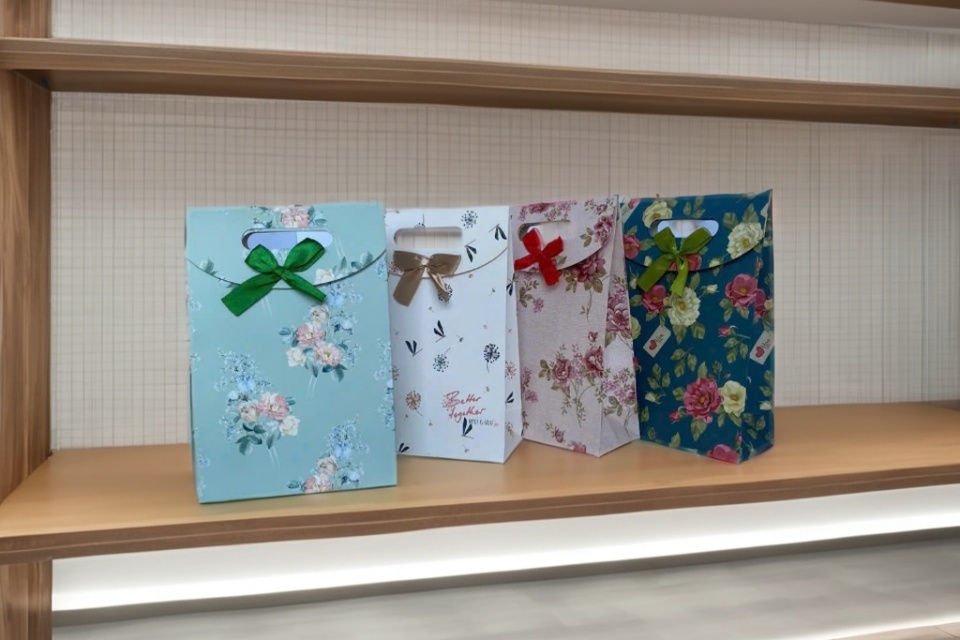
Disadvantages of Paper Bags
While paper bags offer numerous advantages, they also come with certain disadvantages that can impact their effectiveness in various situations.
Durability Concerns
Despite advancements in manufacturing, paper bags can still be less durable than their plastic counterparts. Although they are designed for strength, they may tear or become damaged when overloaded with heavy items, which is a crucial consideration for businesses that need reliable packaging solutions. Additionally, exposure to moisture can weaken paper bags, making them unsuitable for certain products or environments.
Limited Weight Capacity
Paper bags generally have a lower weight capacity compared to plastic bags. While many paper bags can carry loads between 5 to 10 kg, they may not be suitable for transporting heavier items without risking breakage. This limitation can be a significant drawback for retailers or consumers needing to transport bulky or heavy goods.
Cost Implications
In some markets, paper bags may be more expensive than plastic bags, especially when considering bulk purchases. While the cost can be offset by their eco-friendly appeal, businesses operating on tight budgets may find plastic bags to be a more economical choice for high-volume needs.
Environmental Impact
While paper bags are often marketed as eco-friendly, their environmental benefits can be nuanced. The production of paper bags requires more energy and resources compared to recycling plastic bags. If not disposed of properly, paper bags can contribute to waste, and their environmental advantages diminish if they are not reused or recycled effectively.
Aesthetic Limitations
In terms of presentation, paper bags may not always convey the same luxury or sophistication as gift boxes, especially for high-end products. The minimalist trend favors refined aesthetics, which can sometimes be better achieved with custom-designed gift boxes. Therefore, for occasions that require a touch of elegance, paper bags might fall short.
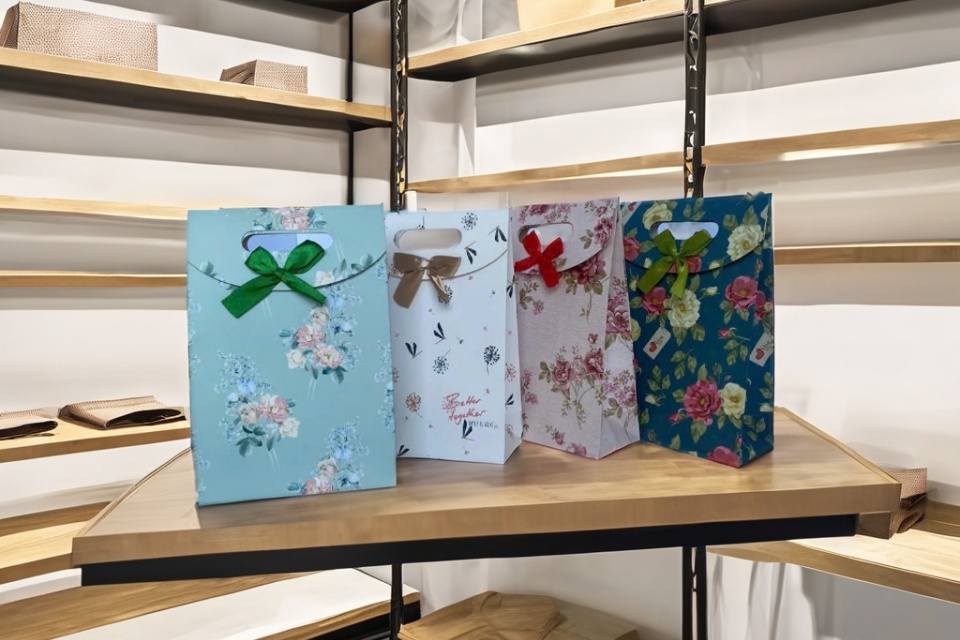
Disadvantages of Gift Boxes
Despite their widespread appeal and versatility, gift boxes come with several disadvantages that can impact both consumers and manufacturers.
Cost Considerations
One of the primary drawbacks of gift boxes is the high cost associated with premium packaging materials. The use of high-quality materials can lead to increased production costs, which may result in higher prices for consumers and potentially limit market growth for manufacturers. Additionally, fluctuating raw material prices contribute to uncertainty within the market, making it challenging for manufacturers to maintain stable pricing and profit margins.
Environmental Impact
The environmental implications of using gift boxes are another significant concern. Traditional gift packaging often involves materials that are not eco-friendly, such as wrapping paper that may be covered with non-recyclable glitter or other embellishments. These materials contribute to waste and are frequently non-biodegradable, adding to landfill problems. Moreover, the production of paper products is linked to deforestation and biodiversity loss, with around 3 billion trees cut down annually for paper-based packaging. The use of non-recyclable components, such as sticky tape and shiny ribbons, further exacerbates the environmental footprint of gift boxes.
Market Competition
Competition from digital gifting alternatives presents another challenge for the traditional gift packaging market. As consumers seek more convenient and innovative gifting solutions, the reliance on physical gift boxes may diminish, potentially affecting sales and demand for such products. The shift towards digital gifting can reduce the overall market for gift boxes, necessitating strategic adaptations from manufacturers to address these evolving consumer preferences.
Regulatory Challenges
Stricter environmental regulations and compliance requirements add to the challenges faced by companies in the gift box market. Businesses are increasingly pressured to adopt sustainable practices and materials, which may require significant investments that smaller players struggle to manage while remaining competitive. This pressure for sustainability can be a significant barrier to entry for new or smaller companies in the market.
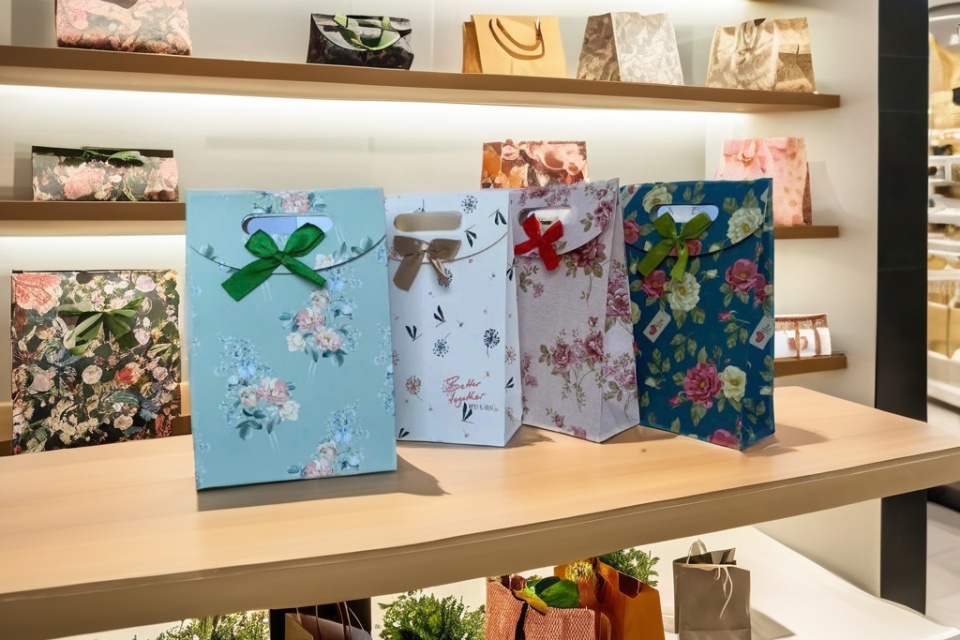
Situational Preferences
When it comes to choosing between paper bags and gift boxes, various situational factors influence consumer preferences and the effectiveness of each packaging option.
Events and Occasions
The type of packaging selected often hinges on the nature of the event. Gift boxes are particularly favored during significant life events such as weddings, holidays, and birthdays, where presentation plays a crucial role in the overall gifting experience. Consumers are increasingly seeking distinctive, personalized packaging that enhances the value of the gift itself, reflecting both the giver’s thoughtfulness and the recipient’s preferences. For instance, premium packaging options become especially popular during the holiday season, as gift givers aim to create a memorable unboxing experience.
Conversely, paper bags are commonly used for more casual or everyday gifting scenarios. They serve practical purposes, such as carrying groceries, food deliveries, or smaller gifts, making them a versatile choice for less formal occasions. Additionally, the increasing consumer interest in sustainability has led to a preference for paper bags, which are often seen as a more eco-friendly alternative to plastic.
Shopping Behavior
The rise of e-commerce has significantly impacted packaging preferences. With a substantial portion of gift purchases now occurring online, the packaging assumes a critical role in the customer’s first impression of the product. In this context, gift boxes are advantageous as they provide a sturdy and visually appealing option that enhances the perceived value of the item. Customers often desire packaging that not only protects the gift but also reflects the occasion, making gift boxes a popular choice in this realm.
On the other hand, paper bags may be more appropriate for in-store purchases or situations where the gift does not require extensive protection or decoration. They are easily customizable and cost-effective, making them suitable for brands looking to maintain an environmentally friendly image without sacrificing convenience.
Demographic Considerations
Younger consumers tend to gravitate towards minimalistic and aesthetically refined packaging, aligning with the trend of understated elegance. This demographic appreciates designs that emphasize premium quality through simplicity, suggesting that brands should consider these preferences when choosing between paper bags and gift boxes. As such, situations involving younger consumers might lean more towards sophisticated gift boxes that cater to their desire for a meaningful gifting experience, while traditional paper bags can be used for everyday shopping and less formal gifting occasions.
Cultural Perspectives
Cultural factors significantly influence the way gift-giving is perceived and practiced around the world. Different cultures have unique beliefs and associations that shape their gifting traditions, especially during winter celebrations and other significant occasions. In countries like Japan, the act of giving is elevated to an art form, where the presentation of the gift is as crucial as the gift itself. Gifts are often wrapped meticulously and presented with both hands as a sign of respect, highlighting the importance of etiquette in their culture. The initial refusal of a gift before acceptance further underscores humility and appreciation in the Japanese gifting ritual.
Similarly, other cultures have distinct guidelines and practices associated with gift-giving. In China, Singapore, Taiwan, South Korea, and Japan, the nuances of insisting and politely declining gifts can make the experience complex, resembling a traditional dance that requires understanding and adherence to cultural norms. This notion of adhering to specific traditions is vital to ensure that no offense is caused, especially in multicultural environments.
In contrast, Western cultures often focus more on the emotional connection fostered through gifting. The primary motivations for gift-giving include expressing love and appreciation to family, friends, and clients, thereby strengthening relationships. The psychological motivations behind gifting can vary widely, influenced by individual circumstances and relationships, which often lead to diverse approaches in different regions.
As gifting practices evolve, manufacturers are increasingly recognizing the importance of cultural considerations in product presentation. In Canada, for example, the diverse cultural backgrounds necessitate the crafting of gift baskets that acknowledge and celebrate this diversity. This awareness not only enhances the gifting experience but also allows brands to resonate more deeply with their audiences, catering to the growing demand for personalized and culturally relevant packaging solutions.
Environmental Considerations
The environmental impact of packaging materials is a critical factor in the ongoing debate between paper bags and gift boxes. Both options come with their own ecological footprints, and understanding these can help consumers make informed choices.
Paper Bags
Paper bags are often regarded as a more sustainable option compared to plastic bags, primarily due to their bio-based, biodegradable, and recyclable nature. They can be recycled over 25 times through local waste streams, contributing significantly to waste reduction efforts. In Europe, where recycling rates for paper and cardboard packaging are the highest globally at 83.2% in 2022, the recycling of paper bags can lead to the saving of natural resources and reduction of carbon emissions. Moreover, trees used for paper absorb CO2 during their growth, with the average annual sequestration of carbon in Europe reaching 155 million tonnes between 2010 and 2020, further mitigating climate change impacts.
Despite these benefits, the paper production industry poses its own challenges. The industry is responsible for cutting down approximately 3 billion trees annually and consumes significant amounts of water and energy, contributing to about 190 million tonnes of CO2 emissions in 2021. Additionally, the average recycling rate for paper fibres in Europe is only 3.5 times, significantly lower than the theoretical maximum of eight times. Furthermore, food contamination in paper-based packaging can inhibit effective recycling, which complicates waste management processes.
Gift Boxes
Gift boxes, particularly those made from high-quality paper, offer their own set of environmental advantages. They are typically made from sustainably sourced materials and can be recycled or composted more easily than their plastic counterparts. As consumers become increasingly aware of sustainability issues, many brands are opting for paper-based solutions to align with consumer preferences for eco-friendly options. Innovations in paper packaging have led to the development of more durable and water-resistant boxes, making them suitable for a variety of products without sacrificing environmental integrity.
However, the environmental benefits of gift boxes can be offset if they are made from non-recyclable materials or if they incorporate plastics and coatings that hinder their recyclability. The design and materials used in gift boxes should, therefore, prioritize sustainability to truly minimize their ecological impact.
Current Consumer Trends
The gift packaging market is experiencing significant transformations driven by changing consumer preferences, economic factors, and environmental considerations. One of the most notable trends is the increasing preference for premium and personalized gifts, which has resulted in a surge in demand for luxurious and customized packaging solutions. This shift is largely attributed to rising disposable incomes, allowing consumers to invest in higher-end gift presentation options that enhance the overall gifting experience.
Sustainability and Eco-Conscious Choices
A critical trend in the market is the growing commitment to environmental sustainability. Consumers are becoming more discerning about the packaging materials used in their gifts, leading to increased demand for eco-friendly options such as recycled paper, compostable plastics, and biodegradable fabrics. This alignment with sustainable practices is not only a response to consumer preferences but also a necessity for brands to maintain competitiveness in an era where ethical considerations significantly influence purchasing decisions.
Personalization and Customization
Personalization is another key trend, with consumers increasingly seeking packaging that reflects their individual tastes and the preferences of the gift recipient. This has led to the rise of customizable options in gift wrapping, including the use of digital printing technologies that allow for unique designs and themes tailored to specific occasions. As a result, brands are innovating to offer diverse and distinctive packaging solutions that serve both functional and aesthetic purposes.
E-Commerce Influence
The expansion of e-commerce is also shaping consumer behavior in the gift packaging market. As online shopping continues to grow, there is a heightened demand for packaging that is not only protective but also enhances the unboxing experience for customers. This trend has prompted manufacturers to develop lightweight, durable, and visually appealing packaging designs that cater to the online shopping demographic.
Demographic Shifts
The primary target demographic for gift wrapping products includes consumers aged 25-45, with a notable focus on millennials and environmentally conscious individuals. This group is characterized by its willingness to invest in quality and sustainability, reflecting broader shifts in consumer values. Retail channels, including online platforms and convenience stores, are adapting to these preferences by offering a wide range of packaging options that meet diverse consumer needs.
